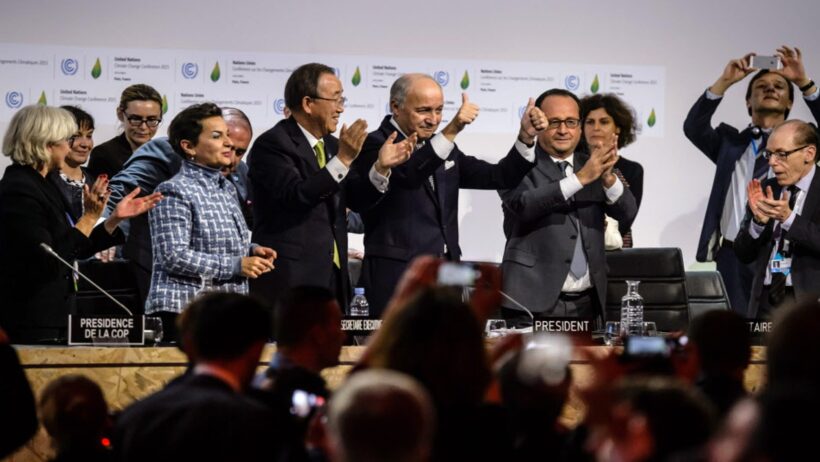The Paris Environmental Accords, established in 2015, represent a monumental commitment by nations to address climate change and its associated ramifications. The goal is to limit global temperature rise to well below 2 degrees Celsius above pre-industrial levels, with aspirations to restrict the increase to 1.5 degrees Celsius. The efficacy of these accords in actually mitigating global warming temperatures has spurred extensive debate among scientists, policymakers, and activists alike.
To thoroughly assess the impact of the Paris Accords on global warming temperatures, it is imperative to consider several pivotal factors, including the commitments made by participating countries, the mechanisms for enforcing these pledges, and the external variables influencing climate change.
Firstly, the architecture of the Paris Accords is fundamentally based on Nationally Determined Contributions (NDCs). Each country is tasked with defining their own emissions reduction targets, reflecting their unique circumstances and capabilities. While this approach allows for flexibility, it simultaneously fosters a significant disparity in climate action. Developed nations, which historically have been the largest polluters, are expected to lead in reducing emissions, while developing nations often receive leniency to pursue economic growth. This dichotomy raises essential questions about equity and accountability.
Further complicating matters is the concept of “greenhouse gas accounting.” Countries vary in their methodologies for calculating emissions, often leading to discrepancies that can undermine the integrity of reported data. For example, some nations may count forested areas as carbon sinks, thereby offsetting their emissions. This practice can skew understanding of actual contributions to global warming.
The enforcement mechanisms of the Paris Agreement also warrant scrutiny. The accord lacks binding enforcement measures; instead, it relies on a system of transparency and peer pressure. This approach is intended to foster a spirit of collaboration and collective responsibility. However, without tangible consequences for non-compliance or inadequate progress, the incentive for nations to fulfill their commitments diminishes. The voluntary nature of the agreements may lead to varying degrees of adherence, further complicating collective efforts to achieve climate goals.
Moreover, the ambitious targets set forth in the agreement are often undermined by political and economic factors. Changes in administration—especially in larger emitting countries—can result in significant shifts in climate policy. For instance, the withdrawal of major economies from international agreements can erode the collective efficacy of the accords. This was notably highlighted when a prominent nation exited the agreement, prompting widespread concern that such moves could potentially derail global efforts to combat anthropogenic climate change.
Additionally, the Paris Accords did not originally encompass crucial sectors, such as aviation and maritime transport, which contribute significantly to global greenhouse gas emissions. This exclusion raises further questions about the comprehensive nature of the agreements. The omission of these critical sectors reveals the inherent limitation of the framework in addressing all facets of global emissions.
Despite these challenges, proponents of the Paris Accords argue that they have catalyzed unprecedented collaboration and commitment to addressing climate change. The framework has heralded an era of awareness, prompting many countries to prioritize renewable energy and invest in sustainable technologies. The growth of solar and wind energy, along with advancements in battery storage technology, showcases the tangible benefits of increased collaboration spurred by the accords.
The commitment to climate finance, where wealthier nations pledge to support developing countries in their climate initiatives, is another noteworthy aspect. Such financial mechanisms are crucial for enabling vulnerable nations to implement robust adaptation and mitigation strategies. Nevertheless, fulfillment of financial promises has been inconsistent, jeopardizing the potential for effective action on a global scale.
Furthermore, the concept of a “climate emergency” has gained traction in recent years, propelling the urgency for more ambitious actions. Numerous cities and regions have declared climate emergencies in response to the growing threat posed by climate change. Local initiatives often demonstrate a stronger desire for rapid change than might be observed at the national level. These grassroots movements reveal a vital aspect of climate action that complements the overarching framework established by the Paris Accords.
Individuals and communities have increasingly engaged in advocacy efforts, pushing for legislative changes that align with the goals of the Paris Agreement. Their actions contribute to a broader paradigm shift towards sustainability and environmental stewardhip. By fostering a cultural ethos surrounding climate accountability, society can collectively strive towards the fundamental objectives established in Paris.
In summary, while the Paris Environmental Accords play a crucial role in fostering international dialogue and commitment to address climate change, their actual efficacy in lowering global warming temperatures remains contentious. Factors such as the voluntary nature of commitments, varying accountability mechanisms, political fluctuations, and sector exclusions complicate the landscape of global climate actions. However, the overarching framework continues to inspire a shift towards sustainability and collective climate responsibility. Progressive local actions, coupled with sustained international collaboration, are essential in driving meaningful climate action towards the benchmarks defined by the Paris Agreement.








